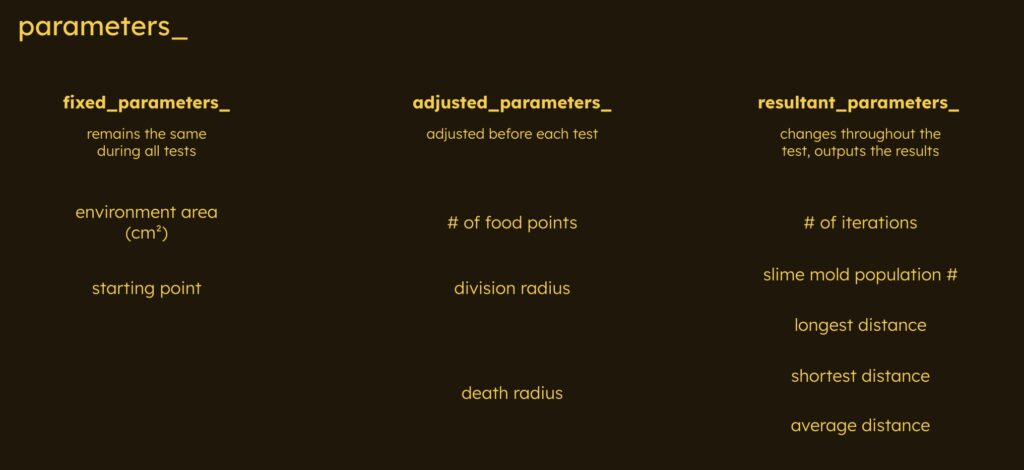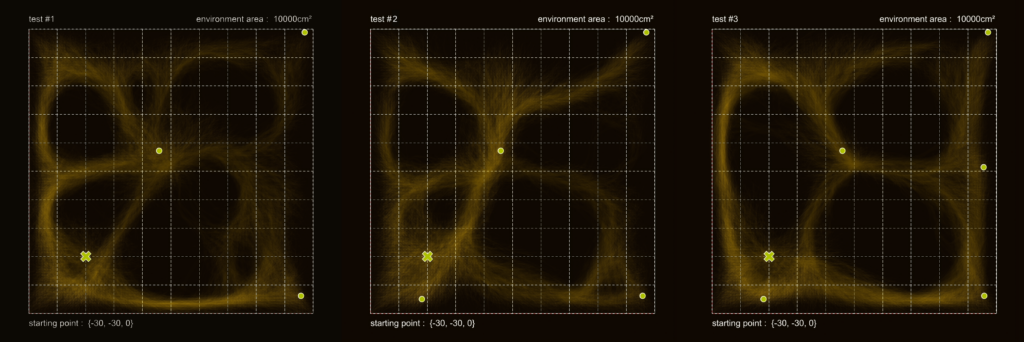slime molds a.ka. physarum
Slime molds display a unique growth form characterized by efficient “hunting” behaviour and remarkable problem-solving abilities. These organisms form intricate structures for spore production, showcasing adaptive behaviours without a centralized nervous system. Their ability to solve complex problems and optimize growth patterns in order to find nutrient sources has sparked scientific interest, influencing fields such as optimization algorithms and network design.

Using Grasshopper, the dynamic and complex behaviour of slime mold is explored and tested under various parameters. By mimicking the biological processes of this natural neutral network, we can gain insights into emergent behaviours and aids in understanding its potential applications in network optimization and city planning.



we can see the different growth paths the physarum takes based on the number of food points

